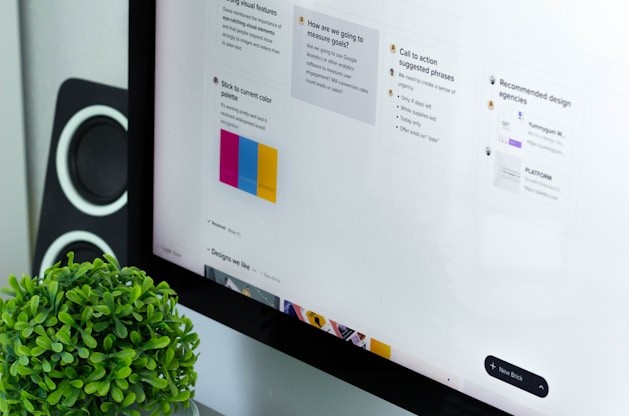Last Updated on July 17, 2024 by Richard Martin Linga
Social media integration is the process of linking your social media accounts with your website. SEO Specialist Philippines, I know how important it is to connect social media to your website. This helps you get noticed online and improves your search engine rankings. In today’s digital world, social media integration is a must for any good SEO strategy. When people can easily find and share your content, it shows search engines that your content is important. Therefore, this can help you rank higher. Social media integration also helps you reach more people and encourages them to like, comment, and share your posts.
So, by integrating social media, you can get more visitors to your site. When users share your content, it reaches a bigger audience, which means more people will visit your site. In other words, more traffic can lead to more sales or sign-ups. Using tools like social media widgets, analytics, and scheduling tools can make this process easier. For instance, social media widgets help people share your content, while analytics tools show how well your content is doing. Above all, keeping your social media profiles active and sharing engaging content can boost your SEO even more. Managing these tasks efficiently can outsource SEO services in the Philippines.
What is Social Media Integration?

Social media integration is linking your social media profiles with your website. This means adding buttons and links to your site that connect to your social media pages. So, when visitors come to your website, they can easily find and follow your social media accounts. In other words, it makes your online presence more connected and accessible.
Importance for SEO
Social Media Integration is very important for SEO. When people share your content on social media, it signals to search engines that your content is valuable. This can help improve your rankings. Also, integrated social media can drive more traffic to your site, which is another positive signal for SEO.
Benefits of Social Media Integration
- Increased Visibility
- Your content reaches more people when shared on social media.
- For instance, a blog post shared on Facebook can be seen by hundreds of people.
- Better Engagement
- Visitors can easily share, like, and comment on your content.
- Therefore, this leads to more interactions and engagement.
- Enhanced SEO
- Social signals can help improve your search engine rankings.
- So, more shares and likes can boost your SEO performance.
How to Implement Social Media Integration
- Add Social Media Buttons
- Place buttons on your website that link to your social media profiles.
- For instance, add Facebook, Twitter, and Instagram buttons.
- Use Sharing Tools
- Enable visitors to share your content directly from your site.
- In other words, make it easy for them to spread the word.
- Consistent Branding
- Ensure your social media profiles reflect your brand.
- Therefore, use the same logos, colors, and messages.
Relation to Keyword Research
Social Media Integration can also help with keyword research. When you see which content is most shared and liked, you can identify popular keywords. After that, you can use these keywords to create more content that your audience will love. Therefore, social media integration not only boosts your SEO but also helps you understand your audience better.
Benefits of Social Media Integration

Increased Online Visibility
Social Media Integration helps your content reach more people. When your posts are shared on social media, they can be seen by more people. So, this means more visitors to your website. For instance, a single share on Facebook can introduce your content to many new users. Therefore, integrating social media is a great way to increase your online visibility.
Enhanced Brand Awareness
When you integrate social media with your website, you create a consistent online presence. This helps people recognize and remember your brand. In other words, the more they see your brand on different platforms, the more familiar they become with it. Therefore, Social Media Integration can greatly enhance your brand awareness. Also, this familiarity can lead to more trust and loyalty among your audience.
Improved Engagement Rates
Social Media Integration makes it easy for users to interact with your content. They can like, share, and comment on your posts. This boosts engagement. In addition, higher engagement rates show search engines that your content is valuable. This can improve your search rankings. For instance, when a post gets many likes and shares, it shows that people find it interesting and useful. So, integrating social media can help improve your engagement rates.
Better SEO Performance
Social Media Integration is good for SEO. When people share your content, it creates social signals that search engines use to rank pages. These social signals can help your SEO performance. Also, integrating social media with your website can help your on-page optimization efforts. For example, when you optimize your content for keywords and make it shareable on social media, you increase its reach and effectiveness. Therefore, combining social media integration with on-page optimization can lead to better SEO results.
Increased Traffic
By integrating social media, you can drive more traffic to your website. When your content is shared on social media, it attracts new visitors. These visitors might explore more of your website, leading to higher traffic levels. For instance, a popular tweet or Facebook post can bring many visitors to your site. So, Social Media Integration is a powerful tool for increasing website traffic.
Best Practices for Social Media Integration

Consistency Across Platforms
Consistency is key in Social Media Integration. Make sure your brand looks the same on all social media sites. Use the same logo, colors, and tone of voice. This helps people recognize your brand quickly. So, a consistent brand builds trust and makes your business look professional. Also, update all profiles often to keep them current.
Using Social Media for Link Building
Social media is a great tool for link building. Share your website content on social media platforms. For instance, post blog articles, product updates, and news. When people see and share these posts, it creates backlinks to your site. Therefore, these backlinks can help improve your SEO. In addition, ask influencers to share your content for more links. So, Social Media Integration supports your SEO strategy.
Leveraging User-Generated Content
User-generated content (UGC) can boost your Social Media Integration efforts. Encourage your followers to create and share content about your brand. For instance, ask them to post reviews, photos, or videos of your products. Share this content on your profiles to show appreciation. In other words, UGC can make your brand more relatable and trustworthy.
Engaging with Your Audience
Engage with your followers to make the most of Social Media Integration. Reply to comments and messages quickly. For instance, thank users for positive feedback and address any concerns. This shows you value their input. In addition, host live Q&A sessions or polls to interact more. So, active engagement builds a strong community around your brand.
Scheduling and Analytics Tools
Use scheduling tools to plan and post content at the best times. Tools like Buffer and Hootsuite can help you stay organized. Therefore, you can maintain a regular posting schedule. Also, use analytics tools to track the performance of your social media efforts. For example, see which posts get the most engagement and why. This data can help you refine your Social Media Integration strategy.
Promoting New Content
Promote new content across all social media channels. When you publish a new blog post, share it on Facebook, Twitter, Instagram, and LinkedIn. This increases its reach. So, use catchy headlines and images to grab attention. In other words, effective promotion can drive more traffic to your site.
How Social Media Integration Enhances SEO

Social Signals and SEO
Social signals are actions like shares, likes, and comments on social media. These signals show that people find your content interesting. Therefore, search engines take these signals into account. In other words, the more social signals your content gets, the better it can rank. Also, social signals can help search engines index your content faster.
Content Sharing and SEO
Content sharing is a key part of Social Media Integration. When you share your content on social media, more people see it. So, this increases the chances of getting more visitors to your site. For instance, a popular post on Facebook can drive a lot of traffic to your website. In addition, shared content can stay on social media platforms for a long time, continuing to attract visitors. Therefore, sharing content boosts your online presence and helps your SEO.
Building Backlinks through Social Media
Backlinks are links from other websites to your site. They are important for SEO. Social Media Integration helps in building backlinks. When your content is shared, it reaches more people. Some of these people might link to your content from their own websites. So, this creates valuable backlinks. For example, a shared blog post can be linked by other bloggers or websites. Therefore, link building through social media is an effective way to improve your SEO.
In summary:
- Social Signals and SEO: Social signals like shares, likes, and comments improve search engine rankings.
- Content Sharing and SEO: Sharing content on social media increases visibility and attracts more visitors.
- Building Backlinks through Social Media: Shared content can create valuable backlinks, boosting SEO.
Tools for Effective Social Media Integration

Scheduling Tools
Scheduling tools let you plan and post content at the best times. They help you keep a regular posting schedule. For instance, Buffer and Hootsuite are popular options. You can schedule posts for multiple social media accounts from one place. In other words, these tools save you time and keep your content consistent. So, using scheduling tools can improve your social media strategy and enhance your social media presence. Also, they help you manage your social media budget by optimizing post timing.
Analytics Tools
Analytics tools help you track the performance of your social media efforts. They show you which posts get the most likes, shares, and comments. For example, Google Analytics and Sprout Social provide detailed reports. These reports can help you understand what works and what doesn’t. Therefore, you can adjust your strategy based on this data. Also, analytics tools can show how Social Media Integration affects your website traffic and SEO. These insights are crucial for developing effective social media integration strategies and for brand building.
Sharing Buttons
Including sharing buttons on your website can boost your Social Media Integration efforts. These buttons make it easy for visitors to share your content on their social feeds. So, having prominent social sharing buttons can increase the reach of your content. This simple addition can enhance your overall social media content strategy and improve engagement.
Management Tools
Management tools help you handle various parts of your social media accounts. They assist in scheduling, analytics, and content creation. Tools like Buffer and Hootsuite are excellent for media management. They help ensure your social media content is posted at the right times and reaches the right audience. So, using these management tools can streamline your social media operations and support your brand-building efforts.
Content Creation Tools
Content creation tools make it easy to create engaging posts. They offer templates, graphics, and editing features. For instance, Canva and Adobe Spark are great for making eye-catching images and videos. In addition, tools like Grammarly help ensure your text is clear and error-free. So, using these tools can improve the quality of your social media content. Effective content creation is a key part of successful Social Media Integration.
Common Mistakes to Avoid

Ignoring Consistency
Consistency is key in Social Media Integration. Make sure your brand looks the same on all platforms. Use the same logo, colors, and tone of voice. So, this helps people recognize and trust your brand. In other words, inconsistency can confuse your audience and weaken your brand image. Also, update your profiles often to keep them fresh. Consistent social media buttons and visuals help maintain a strong brand presence.
Overlooking Analytics and Reporting
Failing to use analytics and reporting tools is a common mistake. These tools help you track the performance of your social media efforts. For instance, they show which posts get the most engagement. So, use tools like Google Analytics and Sprout Social to get insights. In addition, review these insights often to improve your strategy. Therefore, overlooking analytics can make it hard to know what works and what doesn’t. These insights are crucial for effective social media management tools and strategies.
Posting Irregularly
Posting irregularly can harm your Social Media Integration efforts. A regular posting schedule keeps your audience engaged. So, use scheduling tools like Buffer and Hootsuite to plan your posts. These tools help you post at the best times for maximum engagement on social media channels. In other words, posting regularly keeps your audience interested. Therefore, irregular posting can cause your audience to lose interest and hurt your social media marketing.
Ignoring Content Quality
High-quality content is essential for Social Media Integration. Posting low-quality content can damage your brand’s reputation and harm your brand-building efforts. So, use content creation tools like Canva and Grammarly to create and polish your posts. For instance, ensure your images are eye-catching and your text is clear. In other words, good content attracts and retains your audience, improves user experience, and provides social proofs that enhance your social media marketing strategy.
Overlooking Social Proofs
Including social proofs, like customer feedback, is crucial for effective Social Media Integration. These proofs can build trust and credibility for your brand. So, make sure to share positive reviews and testimonials across your social media channels as part of your integration strategy. Therefore, social proofs can boost your brand’s image and attract more customers.
Neglecting an Integration Strategy
Having a clear integration strategy is important for successful Social Media Integration. This includes planning your content, posting schedule, and engagement tactics. So, a well-thought-out strategy helps in managing your media more effectively and ensures consistent brand communication across all platforms. Therefore, an effective strategy makes your social media efforts more successful and integrates media into your marketing seamlessly.
Using Pictures and Videos to Make Content Better

Why Use Pictures, Videos, and Infographics?
- Pictures
Pictures make your content look nicer. For instance, a picture can show what you are talking about and help people remember it. Using high-quality images in press releases can also make your announcements more appealing. - Videos
Videos are great for telling stories. In other words, they can show things quickly and keep people watching. For example, a short video can show how to do something step by step. Offering a 30-day trial through a video tutorial can increase engagement. - Infographics
Infographics turn information into easy-to-see pictures. That is to say, they make complicated things simple. For instance, an infographic can show important facts in a fun way. This is especially useful in online marketing to explain complex data.
Tips for Using Pictures and Videos
- Pick the Right Pictures
Use pictures and videos that match your content. This makes your content better and keeps people interested. In other words, don’t use pictures that don’t make sense with your text. This ensures you are providing relevant content. - Make Sure They Load Fast
Pictures and videos should load quickly. That is to say, big files can slow down your website. Use smaller files so everything works faster. Fast-loading visuals improve the user experience, especially in online marketing. - Use Good Quality
Good quality pictures and videos look better. For instance, blurry pictures don’t look nice. Always use clear and sharp images. This adds professionalism to your content, including press releases. - Mix Text and Visuals
Don’t use too many pictures or videos. In other words, use both text and visuals. This keeps everything balanced and interesting. Mixing text and visuals is key to effective content providing. - Add Captions
Write short descriptions for your pictures and videos. That is to say, captions help people understand what they are seeing. They also help people find your content, like when you use the words “create content that clicks.” Captions make your visuals more accessible and searchable.
Not Engaging with Your Audience
Engagement is crucial for Social Media Integration. Ignoring comments and messages can make your audience feel neglected. So, reply to comments and messages quickly. For instance, thank users for positive feedback and address any concerns. In other words, active engagement builds a loyal community around your brand. Also, host live Q&A sessions or polls to interact more.
Posting Irregularly
Posting irregularly can harm your Social Media Integration efforts. A regular posting schedule keeps your audience engaged. So, use scheduling tools like Buffer and Hootsuite to plan your posts. These tools help you post at the best times for maximum engagement on social media channels. In other words, posting regularly keeps your audience interested. Therefore, irregular posting can cause your audience to lose interest and hurt your social media marketing.
Ignoring Content Quality
High-quality content is essential for Social Media Integration. Posting low-quality content can damage your brand’s reputation and harm your brand-building efforts. So, use content creation tools like Canva and Grammarly to create and polish your posts. For instance, ensure your images are eye-catching and your text is clear. In other words, good content attracts and retains your audience, improves user experience, and provides social proofs that enhance your social media marketing strategy.
Overlooking Social Proofs
Including social proofs, like customer feedback, is crucial for effective Social Media Integration. These proofs can build trust and credibility for your brand. So, make sure to share positive reviews and testimonials across your social media channels as part of your integration strategy. Therefore, social proofs can boost your brand’s image and attract more customers.
Neglecting an Integration Strategy
Having a clear integration strategy is important for successful Social Media Integration. This includes planning your content, posting schedule, and engagement tactics. So, a well-thought-out strategy helps in managing your media more effectively and ensures consistent brand communication across all platforms. Therefore, an effective strategy makes your social media efforts more successful.
Conclusion
Social Media Integration is vital for improving your SEO and online presence. It increases online visibility by reaching a broader audience when your content is shared. Therefore, more people see and engage with your posts. It also enhances brand awareness by maintaining a consistent brand image across all platforms. So, consistency helps people recognize and trust your business.
Social Media Integration boosts engagement rates by encouraging active interaction with your audience. Responding quickly to comments and messages builds a loyal community. Moreover, it improves SEO performance through social signals like shares, likes, and comments, which send positive signals to search engines. Finally, sharing content on social media drives more traffic to your website. So, start integrating your social media today to boost your online presence.
FAQs
What is Social Media Integration?
Social Media Integration links your social media profiles with your website. This helps users easily share your content and follow your social media accounts.
Why is Social Media Integration important for SEO?
Social Media Integration is important for SEO because it increases visibility. So, when people share your content, it sends positive signals to search engines. This improves your rankings.
How can Social Media Integration boost brand awareness?
Social Media Integration boosts brand awareness by keeping a consistent brand image across all platforms. In other words, it helps people recognize and trust your brand.
What tools can help with Social Media Integration?
There are many tools for Social Media Integration. For instance, Buffer and Hootsuite help schedule posts. Also, Google Analytics and Sprout Social track performance.
How does Social Media Integration increase engagement?
Social Media Integration increases engagement by making it easy for users to interact with your content. So, they can like, share, and comment on your posts.
Can Social Media Integration drive more traffic to my website?
Yes, Social Media Integration can drive more traffic to your website. For instance, shared content on social media brings new visitors to your site.
How often should I update my social media profiles?
You should update your social media profiles regularly. In other words, keeping them current helps maintain a fresh and professional online presence.
What are social signals, and why are they important?
Social signals are likes, shares, and comments on social media. They are important because they tell search engines that your content is valuable and popular.
How can I measure the success of Social Media Integration?
You can measure the success of Social Media Integration using analytics tools. For example, Google Analytics shows how social media impacts your website traffic and SEO.
What are common mistakes to avoid in Social Media Integration?
Common mistakes include ignoring consistency, overlooking analytics, not engaging with your audience, posting irregularly, and ignoring content quality. So, avoid these pitfalls for better results.
